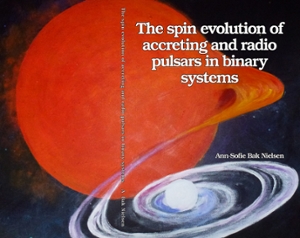Dissertation
The spin evolution of accreting and radio pulsars in binary systems
Pulsars were first discovered in 1967 and since then the population has grown and expanded over several wavelengths.
- Author
- Nielsen, A.B.
- Date
- 13 September 2018
- Links
- Thesis in Leiden Repository

Pulsars were first discovered in 1967 and since then the population has grown and expanded over several wavelengths. In this thesis three different X-ray pulsars and three black widow radio pulsars and their evolution has been examined. The pulsars in this work all show variability that was not expected of their type of sources, e.g. the pulsar 2A 1822-371 is found to have an orbital period that is expanding over time more than what is expected. We suggest this to be due to the pulsar being a super Eddington source. Another part of the thesis uncovers that the magnetic field may have a significant influence in the behavior of the pulsars. Low magnetic field pulsars often show a correlation between their pulse phase and their flux, whereas we find that this correlation is not present in high magnetic field pulsars. This could mean that the hot spot, where the pulsations origin, is not moving in high magnetic field pulsars but could be moving in low magnetic field pulsars. The first black widow pulsars discovered had unstable timing solutions, whereas the black widow pulsars in this work all have stable timing solutions, and we look into possible explanations to this difference.
